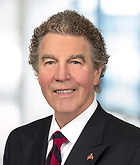Ohio Statehouse Update
Lottery Commission Approves Revised VLT Rules; Votes to Seek Declaratory Judgment on Constitutionality of Lottery Operated Slots at Racetracks
The Ohio Lottery Commission took steps this week to revive the effort to establish slot machines at racetracks after LetOhioVote.org, a group that sought a referendum on the issue following its enactment through last year’s budget bill, withdrew its opposition earlier this month. On Monday, July 19, 2010, the Commission voted to rescind draft rules previously proposed to govern the Lottery’s operation of video lottery terminals (“VLTs”) at Ohio’s horse racing tracks and voted to approve new, revised draft rules to govern their implementation and operation. The revised rules will now be filed with the Joint Committee on Agency Rule Review and a public hearing regarding the revised rules is scheduled for August 20, 2010 at 11:00 a.m.
Further, after an executive session with representatives from the Attorney General’s office, the Commission voted to seek a declaratory judgment from the courts to determine the constitutionality of the plan to install VLTs at racetracks under the state’s authority to operate a lottery. No details regarding the court venue or expected filing date for the approved legal action were disclosed in the public meeting. It also remains to be seen whether gambling opposition groups will mount further legal challenges to the proposed VLT implementation.
Strickland Brokers Agreement on Livestock Care Standards to Avert Statewide Animal Rights Ballot Issue
A costly ballot issue battle was recently averted when the Humane Society of the United States (HSUS) agreed to refrain from filing its petitions containing more than 500,000 signatures seeking a statewide animal rights ballot issue after Governor Strickland sat down with HSUS and state agriculture groups to reach a compromise agreement. Under a memorandum of understanding reached among the parties, the agriculture groups agreed to the submission of recommendations to the Ohio Livestock Care Standards Board to make changes to livestock confinement and euthanasia practices. In addition, the Governor pledged to support the passage of pending legislation placing strong restrictions on puppy mills and increasing the penalties for cockfighting in Ohio, and agreed to promulgate new administrative rules banning the importation of certain dangerous and exotic animals by private citizens. HSUS still retains the ability to file its petitions to put the issue on next year’s ballot, but has agreed to refrain from doing so if significant progress is made on the issues addressed in the agreement.
Budget Commission Begins Holding Hearings
Facing anticipated state budget shortfalls estimated between $4 billion and $8 billion, the House and Senate Budget Planning and Management Commission began holding hearings over the last several weeks. Members of both chambers and political parties acknowledged generally that difficult budget choices would have to be made in the next budget. Commission Co-chair, Senator Shannon Jones, warned that programs and people who receive state funding will be faced with potentially significant reductions.
First Hearing Featured the Ohio Legislative Service Commission (LSC)
On June 29, 2010, LSC presented a comprehensive overview of the current state budget picture and provided some historical budget information. As a result of questions from the legislators, LSC left the hearing with many assignments for more information.
Second Hearing Featured State Budget Director and National Experts
National Conference of State Legislators (NCSL)
On July 7, 2010, representatives from NCSL shared information about state fiscal situations across the nation and actions other states are taking or considering to address budget shortfalls. NCSL reported that most states are facing dismal budget situations as a result of 1) revenue deficits (tax receipts are down), 2) “overspending” in light of revenues (more need/demand for state-funded services), and 3) the pending expiration of one-time federal stimulus funds. NCSL forecasted a very slow recovery for all states and noted that a majority of states are facing budget gaps.
Many states are seeking to raise revenues by enacting or increasing taxes and fees and by suspending or ending tax exemptions. In addition, most states are enacting budget cuts. Many states are also looking at securitization of state property as a potential source for short-term revenue. Some states are adopting “performance-based budgeting” and some are considering using a “zero-based budgeting” approach.
Ohio Office of Budget and Management (OBM)
After hearing about the bleak picture states face nationwide, Ohio Budget Director J. Pari Sabety testified that current, actual state revenue and spending figures are performing in accordance with budget projections made during the last budget process. Despite repeated questioning by legislators, the Director did not provide any specific budget projections regarding revenues, expenditures or deficits for the next biennium, saying it was too soon and too speculative.
Director Sabety did not disclose any budget initiatives currently under consideration by the Administration for balancing the state’s next biennial budget. She repeatedly stated that the Administration was in the process of preparing its budget guidance to the state agencies, which was subsequently released on July 15, 2010. OBM’s Budget Guidance for the next biennium directs agencies to craft their budget proposals based on scenarios at 100% and 90% of current FY 2011 funding levels. Agencies have a November 1, 2010 deadline for submission of their budget requests, after which time OBM will conduct its review and analysis and prepare the Executive Budget for submission to the General Assembly no later than January 31, 2011.
Director Sabety further noted that out of every dollar in the state budget, $0.15 goes to the state for its operations, including prisons and state psychiatric hospitals, and $0.85 goes to local governments. She explained that the last budget focused on trimming back the $0.15 portion that funds state operations and asserted that this next budget must look at the larger $0.85 portion that goes to local governments. She also said that, for real savings, efficiencies must be found in state-local partnership areas such as corrections, Medicaid, human services, and behavioral health.
Midwestern Legislative Conference of the Counsel of State Governments (CSG)
Testifying last, representatives from CSG opined that the economic recovery will be slow throughout the nation, budget gaps may persist for several years in many states and that more federal assistance is needed because most states have not planned for the expiration of federal stimulus funds. CSG recommends that states 1) address dependence upon federal funds, 2) implement austerity measures, and 3) develop and implement strategies for growth. In addition, CSG reported that it views Ohio as having an overall good business climate despite the fact that Ohio continues to lag behind other Midwestern states in terms of economic growth and prosperity. CSG praised Ohio’s Third Frontier efforts and suggested that Ohio focus on finding further ways to encourage entrepreneurial innovation, technology and workforce development, especially in technical education.
Third Hearing Focused on CPAs’ Ideas and Medicaid
J. Matthew Yuskewich led off the Commission’s hearing on July 20, 2010, testifying on behalf of the Ohio Society of CPAs. He explained that the group formed the Ohio Budget Advisory Task Force to provide the state with objective, nonpartisan, third party CPA expertise and perspective to help Ohio’s leaders address the state budget situation. He summarized the Task Force’s June 2010 report, emphasizing that the state should act quickly and recommending that leaders focus on four key areas: 1) reviewing the structure of government to identify opportunities for consolidation of services, 2) finding and creating efficiencies through increased implementation of performance audits, 3) engaging in long-range strategic planning, and 4) examining sources of revenue and if necessary, pursuing “revenue enhancements” in the form of increased fees or taxes, or the elimination of certain discounts and exemptions.
Greg Moody, Interim Director of the Health Policy Institute of Ohio, testified next, providing the Commission with a primer on the state Medicaid system. He was followed by John Begala, Executive Director of the Center for Community Solutions, who provided a summary of the group’s recent report recommending that state leaders pursue a “balanced approach” involving tax increases, reductions in tax breaks, and spending cuts to face the looming budget crisis.
Mr. Begala and Mr. Moody then shared the podium to field numerous questions from Commission members about Medicaid. The members were particularly interested in how federal health care reform will impact the Ohio Medicaid program, and in hearing the presenters’ thoughts on possible future options to contain costs, such as 1) “rebalancing” the Medicaid long-term care budget to decrease nursing home spending and increase home and community-based services, 2) increasing efficiencies and maximizing prescription drug rebates, 3) reducing utilization of services (which may involve decreasing or eliminating services, including “optional” services), and 4) decreasing provider payment rates. Both witnesses agreed that when the temporary, increased federal contribution currently in place for Medicaid expires, Ohio will be faced with the difficult task of finding significant additional state funds, perhaps up to $1 billion, just to maintain the status quo for current Medicaid services.
Further Hearings Planned; Commission Seeking Ideas and Proposals
The Budget Commission is expected to hold additional hearings in the coming weeks to hear testimony from individuals and organizations regarding state financial issues and proposed budget fixes. In addition, the Commission is encouraging individuals and organizations with possible solutions to address the anticipated budget shortfall to submit written proposals to an online repository. The Commission requests that proposals be submitted by August 16, 2010, in PDF format and include two parts: 1) a synopsis (no more than three pages), and 2) a report (no more than 25 pages). All submissions will be public records and will be posted on the Ohio Legislative Service Commission’s website.
Ultimately, the Budget Commission is aiming to review the testimony and white papers submitted for its consideration and publish a report with recommendations by the end of November 2010.
Members – House and Senate Budget Planning and Management Commission
|
Rep. Vernon Sykes (D-Akron) |
Sen. Shannon Jones (R-Springboro) |
|
Rep. Jay Goyal (D-Mansfield) |
Sen. Chris Widener (R-Springfield) |
|
Rep. Ron Amstutz (R-Wooster) |
Sen. Dale Miller (D-Cleveland) |
Links:
NCSL State Fiscal Situation Presentation
CSG Economic Dashboard Presentation
Statehouse Leaders Announce Legislative Schedule for the Second Half of 2010
President of the Senate, Bill Harris, and Speaker of the House, Armond Budish, recently released the Ohio General Assembly’s tentative legislative schedule for the second half of 2010. As expected, very little, if any, legislative activity will take place prior to the November elections. The House and Senate have scheduled “if needed” legislative sessions on Tuesday, September 14 and Wednesday, September 15, while the remainder of this session’s legislative activity is scheduled for November and December in the weeks following the November 2, 2010 General Election.
Click here for a link to the current legislative schedule for the second half of 2010.
This Ohio Statehouse Update is for general information purposes and should not be regarded as legal advice.
Vorys Advisors is not engaged in the practice of law or the provision of legal services.




